Healthcare Video Consultation Setup: Step-by-Step Guide for Clinicians
Disclaimer: This content is for educational purposes only and does not constitute professional medical or clinical advice. WriteUpp is a practice management software company. Always consult relevant medical governing bodies and qualified healthcare professionals for clinical guidance and regulatory compliance requirements.
Key Takeaways
- Video consultations significantly reduce patient no-shows while improving access to care for healthcare practices across the UK
- GMC guidance and GDPR compliance are mandatory requirements for any healthcare provider offering video consultation services
- Integrated practice management software with built-in video functionality works better than standalone video platforms for clinical workflows
- Step-by-step implementation with staff testing and patient communication protocols leads to successful video consultation adoption
Traditional in-person appointments see no-show rates reaching 11.7% to 36.1%. In contrast, video consultations reduce these rates to as low as 2.5%. This significant change shows a wider transformation in UK healthcare.
Video appointments have increased four times in recent years and now account for 8% of all GP appointments across the country.
This guide shows you how to set up a secure, compliant healthcare video consultation service that puts patient safety first, then walks through the exact steps to configure your first session using WriteUpp's built-in video platform.
What is a healthcare video consultation?
A healthcare video consultation connects you with patients through secure video technology using devices with cameras and microphones. You can conduct assessments, provide treatment guidance, and maintain the therapeutic relationship without requiring travel.
Video health consultations work across smartphones, tablets, and computers with stable internet connections. Patients join from private spaces, and you can assess symptoms, review medications, and provide care that matches in-person quality for suitable cases.
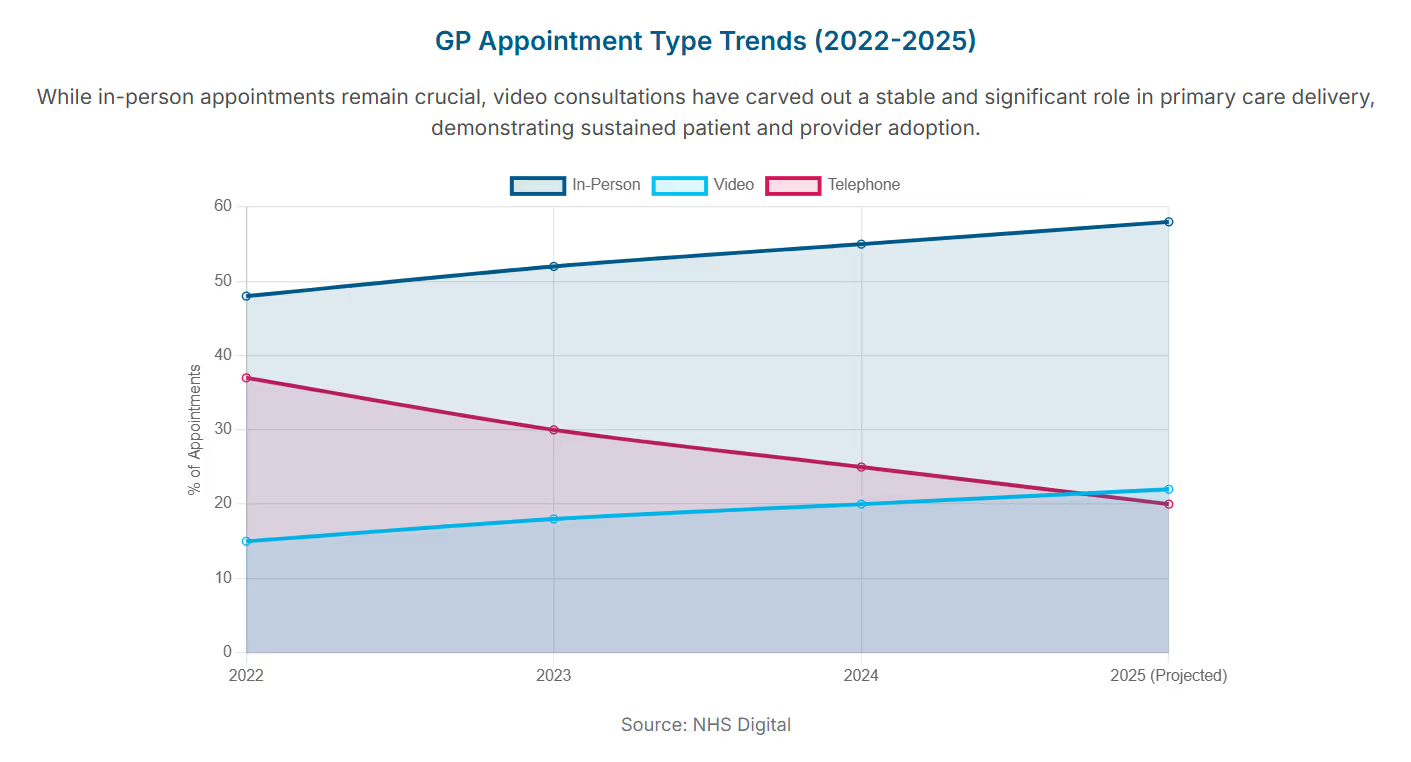
Source: NHS Digital
Video consultations work well for:
- Follow-up appointments and medication reviews
- Mental health sessions and counselling
- Routine check-ups where physical examination isn't required
When physical assessment becomes necessary or clinical concerns arise, you can seamlessly transition to face-to-face care. For practitioners in specific fields like therapy, specialised telehealth considerations may apply to ensure optimal patient outcomes.
Why video consultations in healthcare matter today
Video consultations solve real problems and make care more accessible. The benefits go beyond convenience; they create measurable improvements in practice efficiency and patient satisfaction.
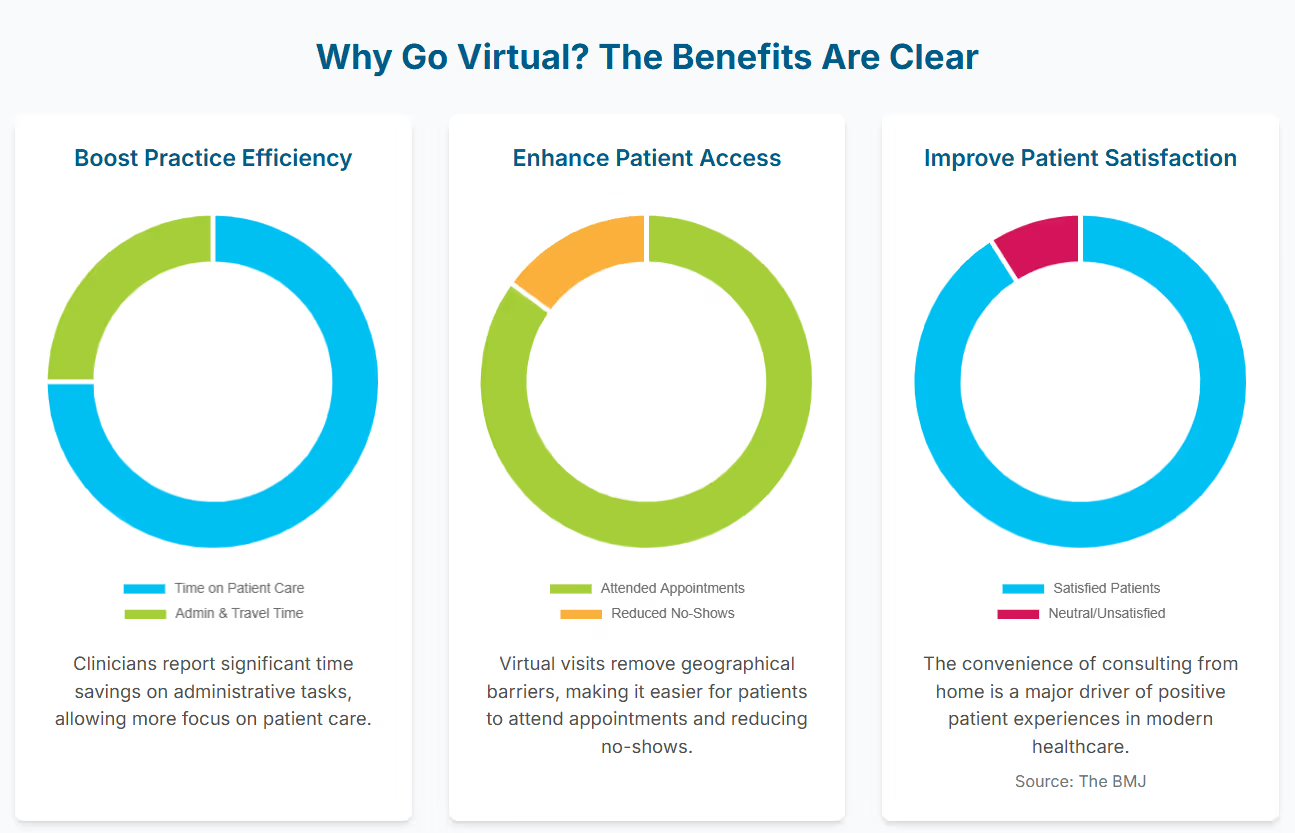
- Better access and flexibility: Patients avoid travel barriers, which is especially important for those with mobility issues or who live in remote areas. You can work from different locations while maintaining consistent care standards. Scheduling becomes more flexible without the need to turn over rooms.
- Improved practice efficiency: Admin overhead decreases with automated booking and reminder systems. You can handle more appointments as they run more predictably without travel delays. Operating costs are lower when working from home or shared spaces.
- Happier patients: Convenient access often leads to better appointment attendance. Patients feel more comfortable in familiar settings. High satisfaction levels among both patients and clinicians encourage continued adoption.
Key legal and ethical considerations
Your video consultation service must meet the same clinical and regulatory standards as in-person care. Here's what UK healthcare providers need to address before offering remote appointments.
Professional standards compliance
- Follow GMC guidance on remote consultations, including appropriate use criteria
- Maintain clinical governance standards for remote assessment and decision-making
- Document consent processes and clinical rationale for video-based care
Data protection and security requirements
- Comply with GDPR for health data processing during video sessions
- Use platforms with appropriate technical and organisational security measures
- Put clear data retention policies in place for video consultation records
Clinical safety protocols
- Set clear protocols for when video consultations are appropriate
- Create escalation procedures for clinical concerns arising during remote sessions
- Document safety netting arrangements and follow-up protocols
Essential tech and environment setup
Getting an outpatient video appointment right starts with reliable technology and a controlled environment. Here's your checklist to make sure your setup supports high-quality patient interactions.
Hardware requirements
- HD camera and a clear microphone, either built-in or external devices
- Stable internet connection with a minimum 10 Mbps for reliable audio and video
- Backup connection method, such as a mobile hotspot for emergencies
Software and platform compatibility
- Choose platforms that meet NHS Digital Technology Assessment Criteria for clinical safety and security
- Check browser compatibility across patient devices and operating systems
- Keep software updated to maintain security and functionality
Environment setup
- Position the camera at eye level to maintain natural conversation flow
- Use consistent lighting that clearly shows your face without shadows
- Choose a quiet space with a neutral background to reduce distractions
- Have a backup communication method available if technical issues arise
Choosing the right video consultation software
Your choice of platform directly affects patient experience and practice efficiency. You need features that integrate smoothly with your current workflows while ensuring clinical safety and compliance.
When looking at telehealth software options, think about both immediate needs and long-term growth for your practice.
Core functionality requirements
- Secure, encrypted video with simple one-click joining for patients
- Booking that syncs with your practice management system
- Automated confirmations and reminders that include secure access links
- Digital waiting room with arrival notifications and patient status updates
Clinical workflow integration
- Real-time access to patient records during consultations
- Clinical notes with video consultation templates
- Billing and payment processing connected to your existing systems
- Audit trails that capture consultation details for governance requirements
Modern practice management systems should include video functionality rather than requiring separate platforms or logins.

Embed Video: An Introduction to WriteUpp’s Video Consultation Feature
Best practices for conducting a video consultation
Running a professional consultation video in healthcare requires clear structure and effective communication techniques. Here's how to maintain clinical standards while building patient confidence in remote care.
Session opening and patient verification
- Confirm patient identity using agreed identifiers such as full name and date of birth.
- Check who else is present in the patient's location.
- Record consent for the video consultation in your clinical notes.
Communication and assessment techniques
- Maintain eye contact by looking at the camera during key conversation moments
- Speak clearly and check understanding regularly, particularly for complex information
- Use descriptive language for visual assessments when physical examination isn't possible
Managing technical challenges
- Keep a simple script for common audio or video problems
- Have backup communication methods ready if the video connection fails
- Document any limitations of remote assessment in your clinical notes
Step by step: Set up your first healthcare video consultation in WriteUpp
Here's how to get from initial setup to completing your first video consultation, covering account preparation, patient communication, and session management.
Step 1: Enable video consultations
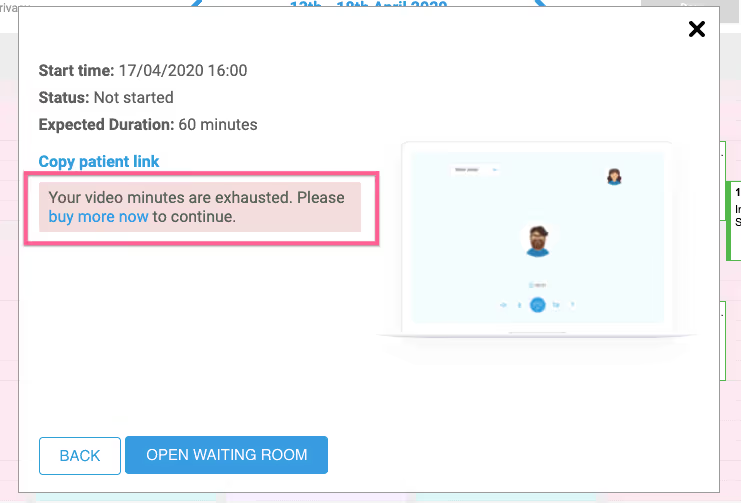
- Check your WriteUpp account and your available video minutes
- Create dedicated video appointment types for easy booking and reporting
- Set up automated confirmations and reminders that include secure access links
- Configure your diary availability specifically for video appointments
Step 2: Configure confirmations and reminders
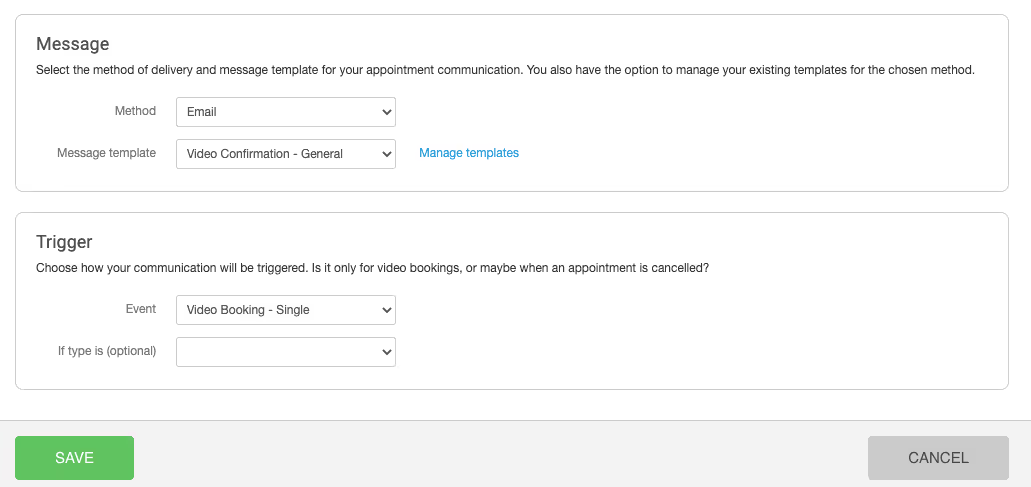
- Go to Main Menu → Settings → Scheduling → Appointment Communication
- Create a new trigger for video bookings with appropriate timing
- Include secure join links and browser compatibility guidance in templates
- Set separate triggers for online bookings and recurring appointments
Step 3: Manage diary availability and online booking
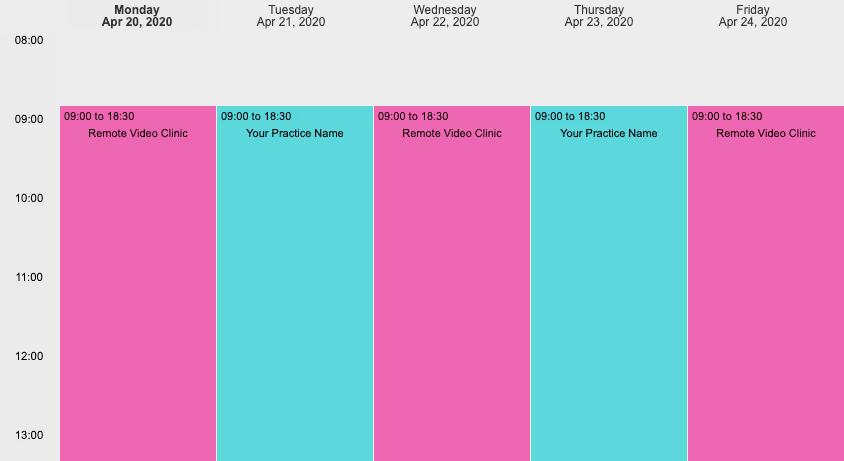
- Define specific time slots for video consultations in your diary
- Enable online booking for video appointment types
- Configure pre-payment options if appropriate for your practice model
Step 4: Book or convert appointments
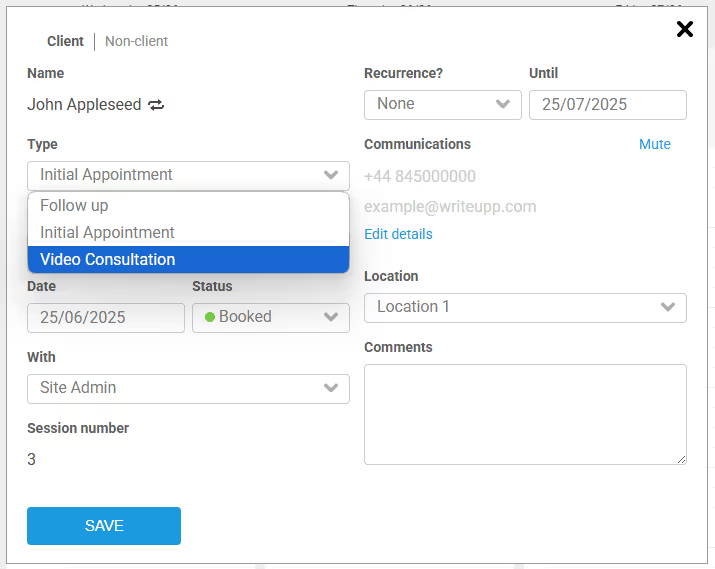
- Book new video appointments directly from your diary interface
- Convert existing appointments to video format when clinically appropriate
- Monitor patient arrival status through the waiting room dashboard
Step 5: Test with a staff or test client
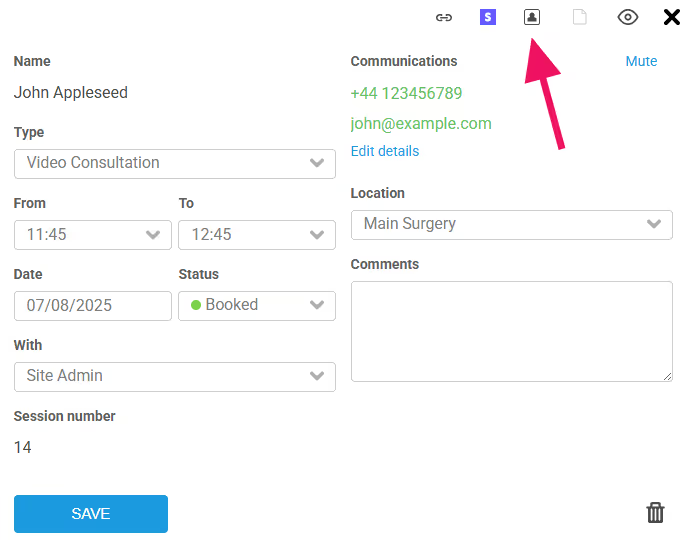
- Run a practice session to check audio, video, and permissions
- Use the preview function to test device settings and connection quality
- Get familiar with in-session controls and troubleshooting options
Step 6: Go live with patients
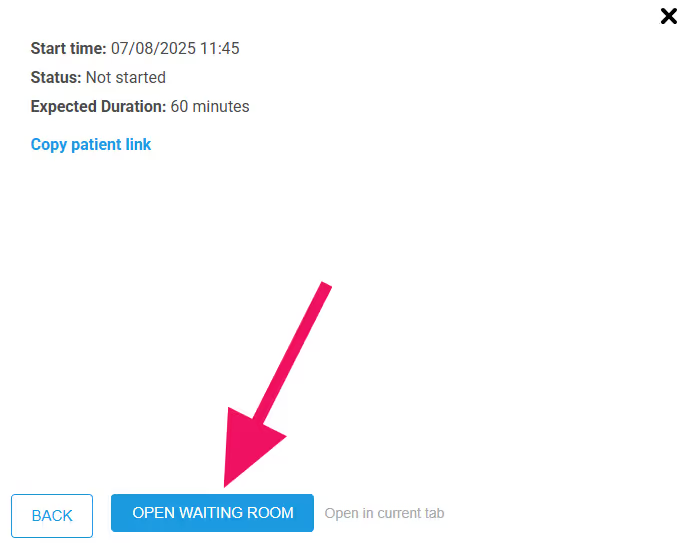
- Send confirmations with clear joining instructions and technical requirements
- Start sessions using the "Switch to video" option in your appointment interface
- Check patient identity and record consultation consent before beginning clinical discussion
Post-consultation tasks and documentation
Complete your video consultation workflow with proper documentation and follow-up processes that maintain continuity of care.
Clinical documentation requirements
- Record consultation mode, participants present, and consent obtained
- Document clinical assessment findings and any limitations of remote evaluation
- Include safety netting advice and clear follow-up arrangements
Administrative processes
- Issue digital prescriptions through your usual prescribing systems where appropriate
- Generate invoices and process payments through your billing systems
- Schedule follow-up appointments while the clinical context remains fresh
Troubleshooting tips before and during video consultations
Most technical issues stem from browser compatibility, device permissions, or connection quality. These solutions address the most common problems clinicians and patients encounter.
Pre-consultation preparation
- Verify appointment is configured as video type with correct communication triggers
- Confirm patient has received access link and joining instructions
- Check browser compatibility, particularly Safari requirements for iOS devices
- Test device permissions for camera and microphone access
During consultation support
- Use the built-in troubleshooting panel to diagnose connection quality issues
- Guide patients through device selection and permission settings
- Remove and re-admit patients if connection problems persist
- Switch to telephone backup if video quality cannot be restored
Browser and device compatibility
- Desktop browsers: Chrome, Firefox, Safari (macOS), Edge (Windows)
- Mobile devices: Safari for iOS, Chrome or Firefox for Android
- Internet Explorer is not supported and patients should update to supported browsers
Set up video consultations and book your first session
Healthcare video appointments are a practical step forward for modern healthcare practices. By putting secure video technology in place, you can improve patient access while maintaining clinical safety and operational efficiency.
The most effective solutions work video consultations directly into your existing practice management workflows, removing the complexity of separate systems while meeting UK healthcare regulations. WriteUpp practice management software features include a built-in video call system with no separate logins or third-party data sharing, connecting seamlessly with patient records, scheduling, and billing systems.
Ready to transform your practice? Start your free 30-day trial with WriteUpp video consultation capabilities, complete with 1,000 free video minutes to get your remote consultation service running immediately.
Frequently asked questions
Can I record healthcare video calls for clinical purposes?
Recording capabilities depend on your local governance policies and patient consent requirements. heck with your information governance team about recording policies, storage needs, and patient consent processes before you start recording.
How can I reduce patient no-shows for video-based consultations?
Automated reminders with the secure link sent 48-72 hours and 1-2 hours before appointments significantly reduce no-shows. Include clear joining instructions, technical requirements, and preparation guidance in your reminder messages to build patient confidence.
What support is available if something goes wrong during the call?
WriteUpp provides comprehensive technical support including setup guides, troubleshooting resources, and direct support contact. During calls, built-in diagnostic tools help identify and resolve common connection issues quickly.



Join over 50,000 clinicians that we've helped using WriteUpp
Start my free trial



